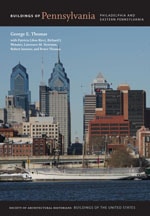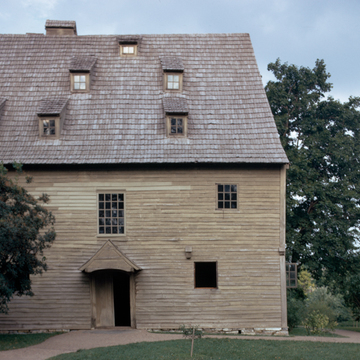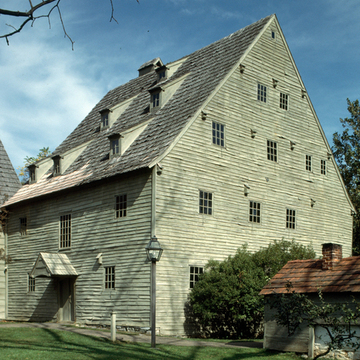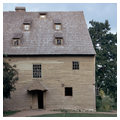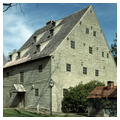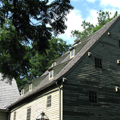The oldest of the surviving structures, the Saal combines medieval German building practices in its hewn oak half-timber frame infilled with stone, its cladding in hand-hewn weatherboards, and its double-tapered hewn shingles each fastened with a single nail. G. Edwin Brumbaugh's account of learning how clapboards were made using a “frow” marks his attention to craft detail in the restoration of the complex. The steep shingled roof is interrupted with shed dormers that light the
You are here
Saal
1740
If SAH Archipedia has been useful to you, please consider supporting it.
SAH Archipedia tells the story of the United States through its buildings, landscapes, and cities. This freely available resource empowers the public with authoritative knowledge that deepens their understanding and appreciation of the built environment. But the Society of Architectural Historians, which created SAH Archipedia with University of Virginia Press, needs your support to maintain the high-caliber research, writing, photography, cartography, editing, design, and programming that make SAH Archipedia a trusted online resource available to all who value the history of place, heritage tourism, and learning.

